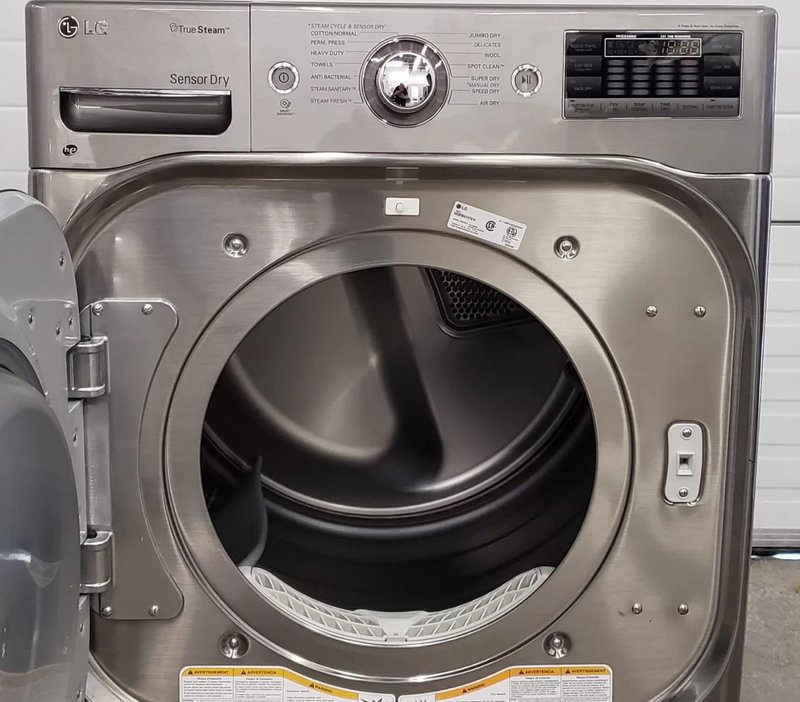
First things first, understanding what the “E3” error code means is crucial. In simple terms, this code indicates an issue with the appliance’s control system, particularly related to the dryer’s motor. Think of it like this: just as a car won’t run smoothly with a faulty engine, a dryer can’t function properly if there’s a problem with its motor control system. The “E3” error tells you there’s a hiccup in the flow that keeps the motor running efficiently. So what’s next? Let’s dive deeper.
Understanding the E3 Error Code
Here’s the deal: the “E3” error code typically points to a malfunction connected to the dryer’s motor. The motor is the powerhouse of your dryer, responsible for turning the drum and keeping the cycle going. When this component faces issues, the entire drying process can come to a screeching halt. Imagine trying to ride a bicycle with rusty gears; it just doesn’t work smoothly, right? That’s what the dryer is experiencing.
This error could come from a variety of sources. Sometimes, it’s as simple as the dryer being overloaded, which puts a strain on the motor. Other times, it may result from a wiring issue, a faulty component, or even a glitch in the control board. It’s like having too many apps running on your phone, causing it to slow down or crash. The dryer’s motor can overheat, stall, or outright stop working if these problems persist without being addressed.
The effects of ignoring this error can go beyond just inconvenience. Continuous operation under such conditions can lead to further damage, just like how driving a car with an engine issue might result in a breakdown. Therefore, it’s crucial to tackle this problem head-on and not just hope it goes away.
Is It Safe to Keep Using the Dryer?
You might be wondering, is it really safe to use your dryer when this “E3” code pops up? The short answer is: not really. Using the dryer with this error code can be risky. It’s akin to continuously using a laptop that keeps overheating; sooner or later, something’s got to give. Running the appliance while it’s malfunctioning not only risks further damage to the dryer itself but also poses safety hazards.
For instance, a malfunctioning motor can lead to overheating, which is a potential fire hazard. Remember, dryers deal with high temperatures, so any malfunction could create a dangerous situation in your home. Besides, continually using a problematic appliance might turn a minor repair into a major expense. It’s better to be safe than sorry, as the saying goes.
So, what should you do in this situation? The best course of action is to stop using the dryer immediately and consult the user manual for troubleshooting steps. If those steps don’t resolve the issue, it’s wise to contact a professional technician to take a closer look. Trust me, a quick inspection now could save you from a lot of trouble later.
Troubleshooting and Next Steps
Alright, so you’ve identified the error code and decided to take action. Now, it’s time to figure out what you can do to troubleshoot the problem. If you’re feeling a bit like a detective trying to solve a mystery, that’s exactly the right mindset! Start by checking the basics: ensure the dryer isn’t overloaded. Sometimes, the easy fixes are the ones we overlook. Picture this: emptying a backpack that’s filled to the brim makes it easier to carry, and the same logic applies here.
Next, consider checking the power supply. A loose connection or faulty outlet might be more common than you think. If everything seems in order and the error persists, it’s time to delve deeper, potentially involving more complex diagnostics like examining the wiring or control panel. But here’s a word to the wise: if you’re not comfortable doing this, reach out to a professional. Attempting a DIY repair on complex electronics might cause more harm than good.
Once you’ve resolved the issue or called in an expert, it’s a good idea to take preventative measures for the future. Regular maintenance, like cleaning lint filters and checking vents, can keep your dryer in tip-top shape. It’s like giving your car regular tune-ups to keep it running smoothly. By addressing minor issues early, you’ll prevent more significant, costlier problems from developing down the line.
Preventative Tips for Future Safety
You’ve got your dryer back to working order, and now you’re probably wondering how to keep it that way. Preventative measures are not only wise but can also save you a ton of hassle. Think of this as setting up a safety net for your appliance. Regular maintenance is key – akin to flossing your teeth or changing the oil in your car. Simple, consistent actions can prevent bigger issues later.
Start by regularly cleaning out the lint trap, and make sure to vent the dryer properly to avoid overheating. This basic step is crucial because lint buildup is a common cause of fires in dryers. Just like keeping gutters clear of leaves prevents water damage to your home, keeping the lint trap clean helps the dryer function smoothly.
Additionally, try to avoid overloading the dryer. As tempting as it might be to throw all your laundry in at once, it’s not worth the strain it puts on the motor and other components. Consider doing smaller loads; your dryer will thank you for it. Lastly, if ever in doubt, don’t hesitate to consult the user manual or contact customer support for advice tailored to your specific model.
By taking these steps, you’re not just ensuring the longevity of your dryer, but you’re also ensuring your peace of mind. It’s like setting an insurance policy for your appliance – a bit of effort now saves you a lot of effort and cost later. Remember, being proactive is always better than being reactive.